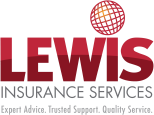Understanding the risk of Under-insurance
Did you know Australia is one of the most under-insured nations in the developed world? From inadequate levels of income protection and life insurance arrangements, to grossly undervalued business assets and equipment, alarmingly few Australians have anything remotely like what they’d actually need in the event of a claim.
According to the definition used by ASIC on the MoneySmart.gov.au website, you’re considered to be under-insured if your insurance covers less than 90% of the total costs in the event of a loss. To put this figure in context, a 2014 study by CommInsure valued this under-insurance at staggering $3.1 trillion. Even worse, small business has one of the highest incidences of under-insurance, with an estimated 70% of all policies affected. Based on these statistics there’s a reasonable chance your business could be one of them.
Due to a combination of factors – and often simply because they’re so busy doing other things – many under-insured Australian businesses don’t even realise. However there are also those who do so knowingly, taking a strategic approach to deliberately under-insure to lower their premiums. This is a dangerous game, because in many cases partial cover levels will only lead to partial payouts.
For example, you may choose to insure your business equipment for $100,000 despite the fact it’s actually worth $200,000. If a fire was to cause $50,000 damage (i.e. 25% of the total value), your insurer may be quite legally able to reduce your payout in proportion to your level of under-insurance – meaning you’d only receive $25,000. The rest you’d be forced to wear out of your own pocket potentially crippling your cash flow, if not your entire business.
One of the biggest challenges with under-insurance is correctly assessing how much insurance you actually need. It’s a far more complex task than most small businesses realise. Building, demolition and replacement costs are constantly changing (usually upwards), meaning policies can often be out-of-date surprisingly quickly. Nowadays most insurers provide calculators on their websites to help, but without question the most prudent approach is to engage the services of an insurance specialist whose job is to know these things and make certain you’re not exposed.
Some of the more common under-insurance traps an insurance expert can help you avoid include:
- Underestimating the total repair/rebuilding costs of damaged buildings
- Underestimating the costs associated with removing debris and any necessary site preparation works
- Not allowing adequately for architectural, engineering and regulatory fees
- Undervaluing the replacement costs of plant and machinery
- Failing to increase your level of cover to keep pace with inflation
- Inadequate levels of business interruption insurance
- Being unaware of the full limitations and exclusions on your policy in terms of your business assets and/or specific loss events.
Granted, business insurance isn’t the most exciting of subjects and it can be very tempting to put it off. But it’s vitally important you don’t. Ultimately, any under-insurance shortfall could severely impact your business liquidity and personal cash flow in the event of a loss event. Now really is the time to make sure you’re not one of the 70% of Australian businesses who are under-insured. Who knows, one day you may be very glad you did?
Lewis Insurance Services is here to advise our clients on the issues of under-insurance and help by providing resources to reduce the risk of being under-insured at the time of a claim. To discuss further, please contact Lewis Insurance Services on 07 3217 9015 or send us an email at info@lewisinsurance.com.au .
This article was published by our AFSL Licensee, Insurance Advisernet Australia P/L (08/09/2016)
Disclaimer:
This information and any accompanying material does not consider your personal circumstances as it is of a general nature only. You should not act on the information provided without first obtaining professional financial advice specific to your circumstances and considering the Product Disclosure Statement.
